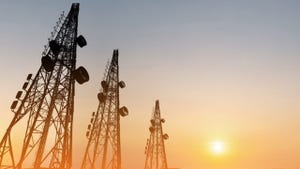5G is good, but perhaps not worth upgrading just yet5G is good, but perhaps not worth upgrading just yet
New research is suggesting London 5G speeds are getting the promised boost, though the overall experience might disappoint a few.
November 18, 2019

New research is suggesting London 5G speeds are getting the promised boost, though the overall experience might disappoint a few.
Global Wireless Solutions, a US network benchmarking, analysis and testing firm, released its examination of the London networks of EE, Vodafone and O2, and while there is success evident in the first months, there is still plenty of work to be done.
“The spikes in the test data reveal that promises of faster speeds can be delivered, but ultimately, it’s the consistency and reliability that is most important to consumers,” said Paul Carter, CEO of Global Wireless Solutions.
“Based on the limited number of sites with 5G antennas combined with the distance constraints of higher frequency 5G signals, it’s going to be a challenge to get 5G access in buildings.
“Given that the mobile network operators have a significant rollout ahead of them to fully realise the potential of 5G, we might also benefit from a review of restrictions governing signal mast height and placement to allow more antenna sites in more convenient locations, rather than just placing them on rooftops.”
According to the analysis, the MNOs are delivering the high-speed download experience which has been promised through 5G, though only if you are standing in the right place.
At St Pauls Cathedral, EE’s network delivered instantaneous peaks of over 470 Mbps, while 330 Mbps from O2 at Victoria Station and 320 Mbps from Vodafone in Belgrave Square also demonstrated the eye-watering speeds of these networks. These are cherry-picked examples from numerous tests throughout the city, though the trend was encouraging; 5G is delivering remarkable download speed upgrades.
What is worth noting, it this is not the gigabit download speeds promised, though you have to bear in mind these networks are operating in the world of non-standalone 5G. More will be delivered in the future as the technology progresses and matures.
This is of course encouraging, however there are two elements which dampen the parade. Firstly, the availability of these download speeds and secondly, latency.
On the latency side, Global Wireless Solutions has indicated there is no meaningful upgrade from 4G connectivity. This is not entirely surprising, as without a 5G core the full-suite of latency services will not be available, though one might have expected an incremental upgrade.
Secondly, the team has noted the drop-off rate is high. By making use of higher-frequency airwaves for 5G connectivity, coverage will be shorter. There is no way around this, the laws of physics dictate the state of play here. However, as 5G is currently being built on existing passive infrastructure, designed for 4G spectrum with larger coverage cones, the problem is unavoidable.
Over the next couple of months, governments and regulators will have to be engaged to ensure the 5G experience can be delivered. Rules on the deployment of active infrastructure will have to be massaged, as relying on rooftop infrastructure to deliver connectivity will not work everywhere. This is a bureaucratic challenge, and one which is being discussed behind closed doors.
All of this presents an interesting challenge for the telcos; how do you engage the consumer with an experience which is wholly inconsistent?
The telcos will have to be very careful. Arguably, it is more damaging to steal a customer and not deliver on the experience than not to have the customer at all. Burnt bridges are very difficult to repair after all, especially with the core mobile connectivity offering becoming increasingly commoditised.
Ultimately, 5G will be a necessity for the consumer. Data consumption habits are aggressively growing and 4G will not be able to meet the demands, both in terms of speed and network congestion. That said, the 5G proposition does look hard to justify for the moment. Compatible devices are incredibly expensive, and the network experience looks very limited. It does not appear to be worth the extra expenditure just yet.
About the Author
You May Also Like










.png?width=300&auto=webp&quality=80&disable=upscale)


_1.jpg?width=300&auto=webp&quality=80&disable=upscale)